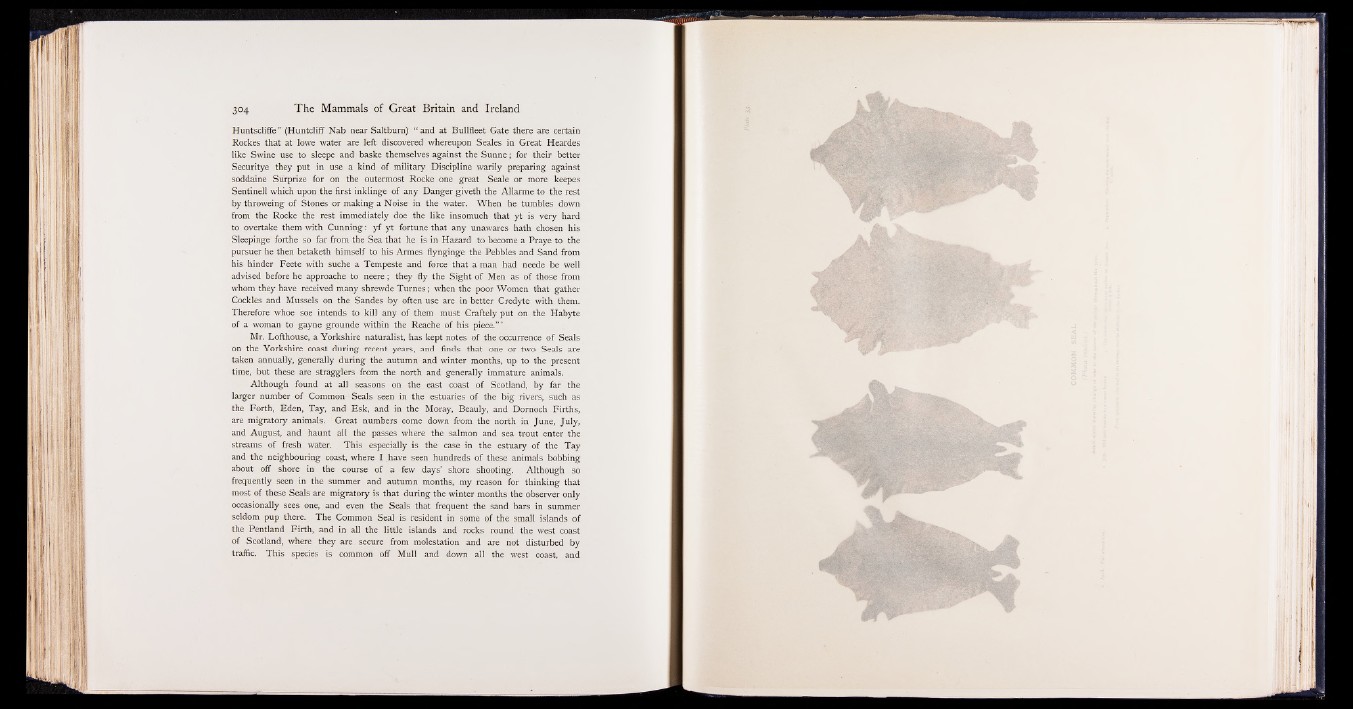
Huntscliffe ” (Huntcliff Nab near Saltburn) “ and at Bullfleet Gate there are certain
Rockes that at lowe water are left discovered whereupon Seales in Great Heardes
like Swine use to sleepe and baske themselves against the Sunne; for their better
Securitye they put in use a kind of military Discipline warily preparing against
soddaine Surprize for on the outermost Rocke one great Seale or more keepes
Sentinell which upon the first inklinge of any Danger giveth the Allarme to the rest
by throweing of Stones or making a Noise in the water. When he tumbles down
from the Rocke the rest immediately doe the like insomuch that yt is very hard
to overtake them with Cunning: y f yt fortune that any unawares hath chosen his
Sleepinge forthe so far from the Sea that he is in Hazard to become a Praye to the
pursuer he then betaketh himself to his Armes flynginge the Pebbles and Sand from
his hinder Feete with suche a Tempeste and force that a man had neede be well
advised before he approache to neere; they fly the Sight of Men as of those from
whom they have received many shrewde Turnes; when the poor Women that gather
Cockles and Mussels on the Sandes by often use are in better Credyte with them.
Therefore whoe soe intends to kill any of them must Craftely put on the Habyte
of a woman to gayne grounde within the Reache of his piece.” ’
Mr. Lofthouse, a Yorkshire naturalist, has kept notes of the occurrence of Seals
on the Yorkshire coast during recent years, and finds that one or two Seals are
taken annually, generally during the autumn and winter months, up to the present
time, but these are stragglers from the north and generally immature animals.
Although found at all seasons on the east coast of Scotland, by far the
larger number of Common Seals seen in the estuaries of the big rivers, such as
the Forth, Eden, Tay, and Esk, and in the Moray, Beauly, and Dornoch Firths,
are migratory animals. Great numbers come down from the north in June, July,
and August, and haunt all the passes where the salmon and sea trout enter the
streams of fresh water. This especially is the case in the estuary of the Tay
and the neighbouring coast, where I have seen hundreds of these animals bobbing
about off shore in the course of a few days’ shore shooting. Although so
frequently seen in the summer and autumn months, my reason for thinking that
most of these Seals are migratory is that during the winter months the observer only
occasionally sees one, and even the Seals that frequent the sand bars in summer
seldom pup there. The Common Seal is resident in some of the small islands of
the Pentland Firth, and in all the little islands and rocks round the west coast
of Scotland, where they are secure from molestation and are not disturbed by
traffic. This species is common off Mul||fand down all the west coast, and